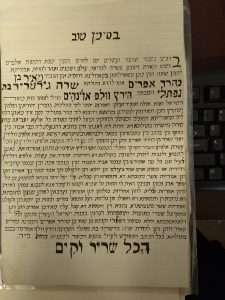
When searching for women in early manuscript collections, it may seem as if they are only found without agency; adjacent to the men in their lives. However, when I began looking for traces of women in Columbia’s rare Judaica collection, I was delighted to discover that they have a presence throughout the collections. I began my search with the usual suspects: records of marriage and divorce, and found many items, along with further materials related to book ownership, prayer, printing, and cataloging.Columbia’s rare Judaica collection contains about 75 ketubbot, ranging from 1649-1890. Some contain the standard text on a single page, like the one on the right, written on simple lined paper in 1857 celebrating the marriage of Sarah Gertrude Oppenheim (to Morris Meyer) in Charleston, South Carolina. Others are far more lavish, like the one below, celebrating the marraige of Rivkah Aboab to Ya’akov Kiridi in Corfu in 1730.

Divorce documents also abound in the library collections. Gitten (divorce documents, singular gett) in Columbia’s collection come from locations as disparate as Nerwa (Nazyah bat Raḥim, 1869) Isfahan (Ruhafza bat Mordekhai, 1845), Sefrau (Ra bat Yosef, 1750), Sandur (Katon bat Aharon, 1655), and Meknes (name unclear, 1721). According to Jewish law, a gett must contain all possible names for the individuals ending their marriage, and so many books were written focusing on the proper form of names used by Jews in many languages.
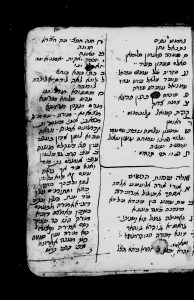
Some books were made exclusively for women, such as prayerbooks. Columbia’s collection contains three Judeo–Italian manuscripts with women’s prayers (i.e. those prayers exclusive to women: lighting the Shabbat candles, separating the hallah, and ritual immersion following menstruation). Additionally, we have a beautifully written and decorated manuscript from Hungary, containing the tkhines in Yiddish, containing supplications prayers for (in this case) the High Holidays.
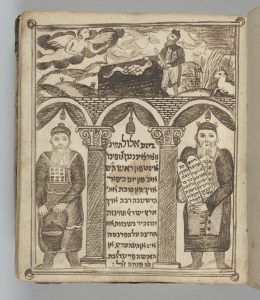
Paks, 1828
General MS 286
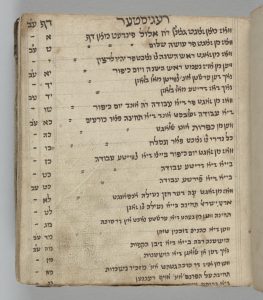
Paks, 1828
General MS 286
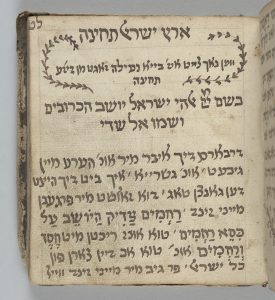
Paks, 1828
General MS 286

Women are also found in Hebrew book production and ownership. Reyna Nasi, daughter of the famed Dona Gracia Mendes (famed for her tireless efforts on behalf of former conversos in Italy and the Ottoman Empire), established a printing press at the palace of Belvedere at Ortaköy, “near Constantinople.” Women were also owners of books, as was the case with an inscription from Miriam, the daughter of Abraham, in a book of Midrash printed in Prague in 1613.

While we’ve now seen many examples of women in text, there are fewer examples of drawings of women. This Judeo-Greek manuscript of prayers from Corfu includes Biblical drawings, one of which is the matriarch Sara, standing in the background “in the tent” as indicated in the caption, while Abraham serves his angelic guests.
We cannot end without mentioning one more important woman who was critical to making these books accessible in the early 20the century. Mary Lyon McClure (profiled extensively by Jane Siegel in this post on women in the history of Columbia’s libraries) was a cataloger at Columbia from 1906-1939. She taught herself many of the non-Western languages (including Persian Arabic, Sanskrit, Armenian, Greek, Russian, and Hebrew) in order to preliminarily catalog books in those languages. Miss McClure (as she was described in internal reports) had a major part in making some of these materials available once they arrived at Columbia.
And so indeed, there are many women to be found throughout Columbia’s Judaica collections. This is but a sampling, and there are many more to be discovered and brought to light.